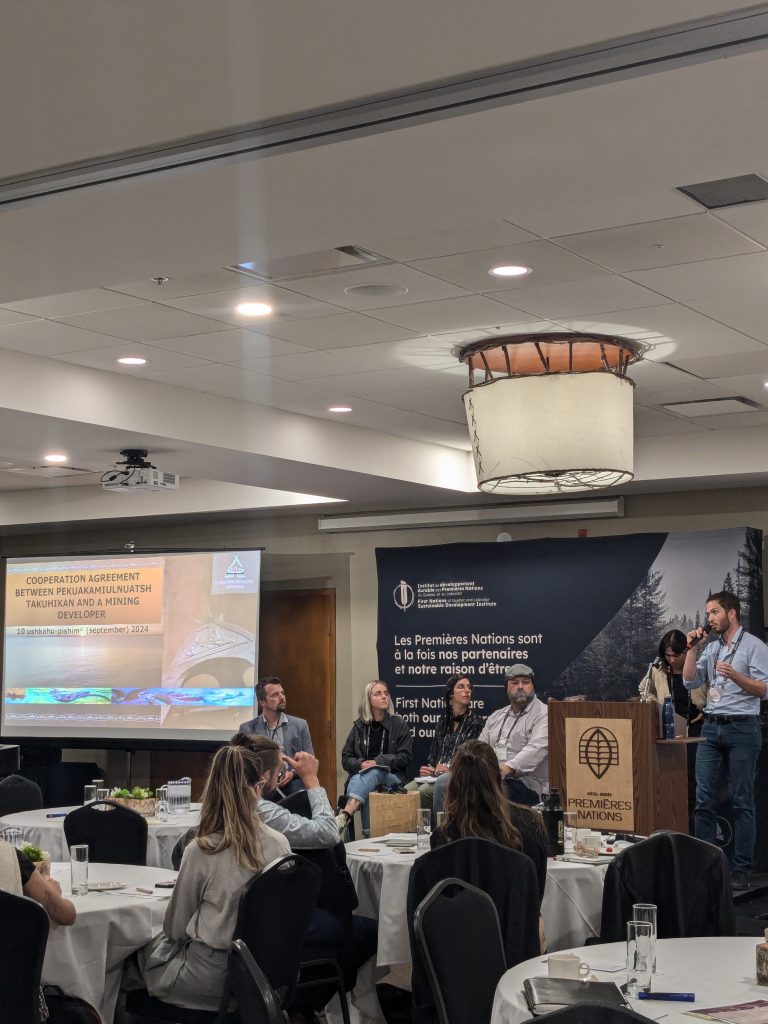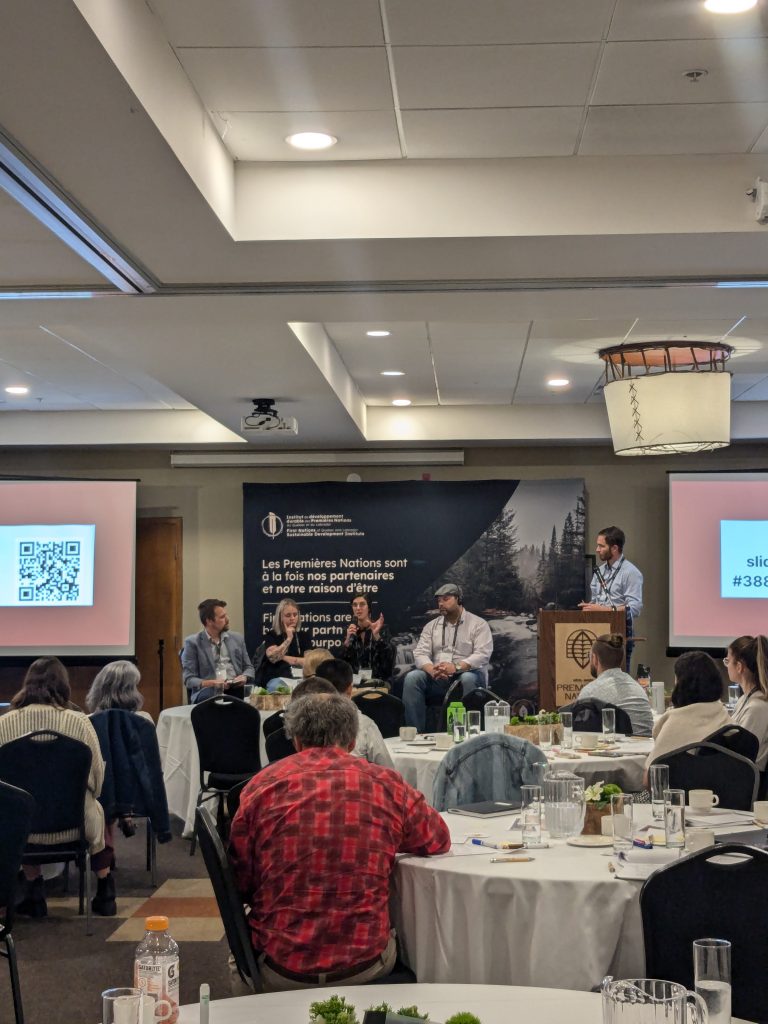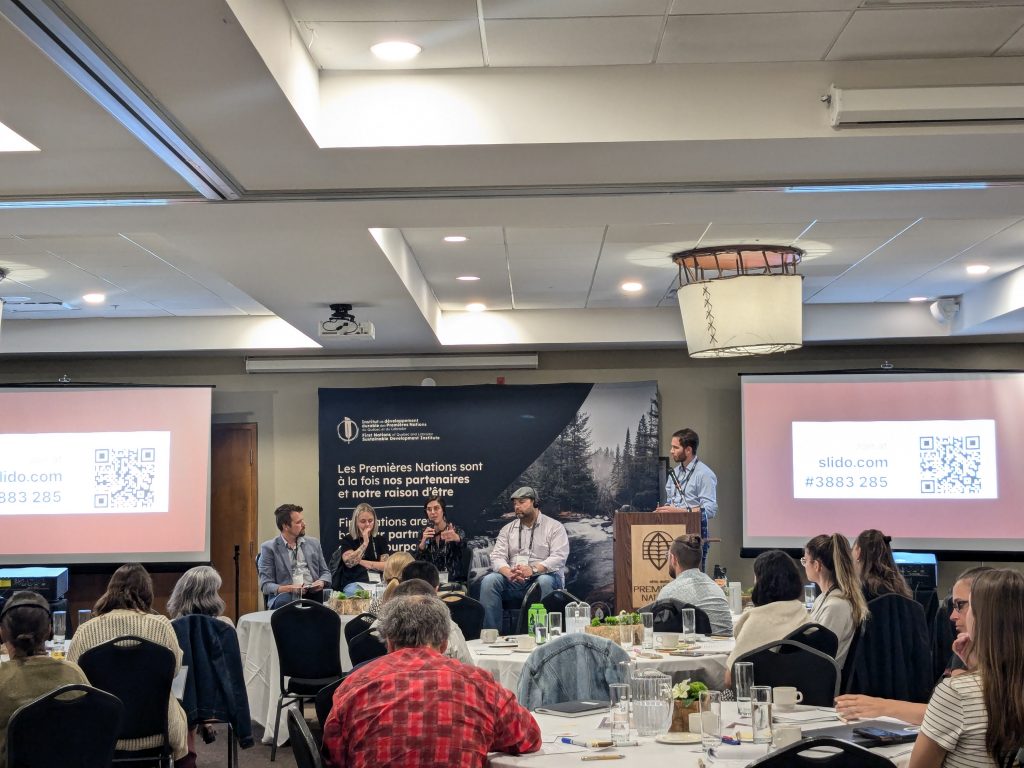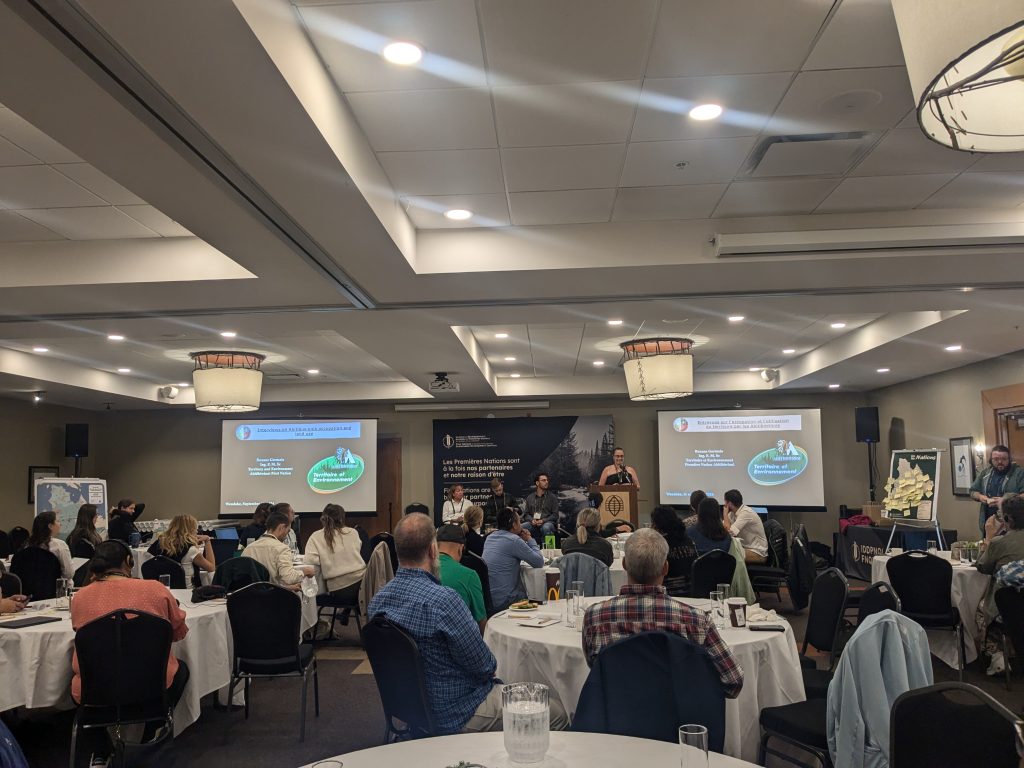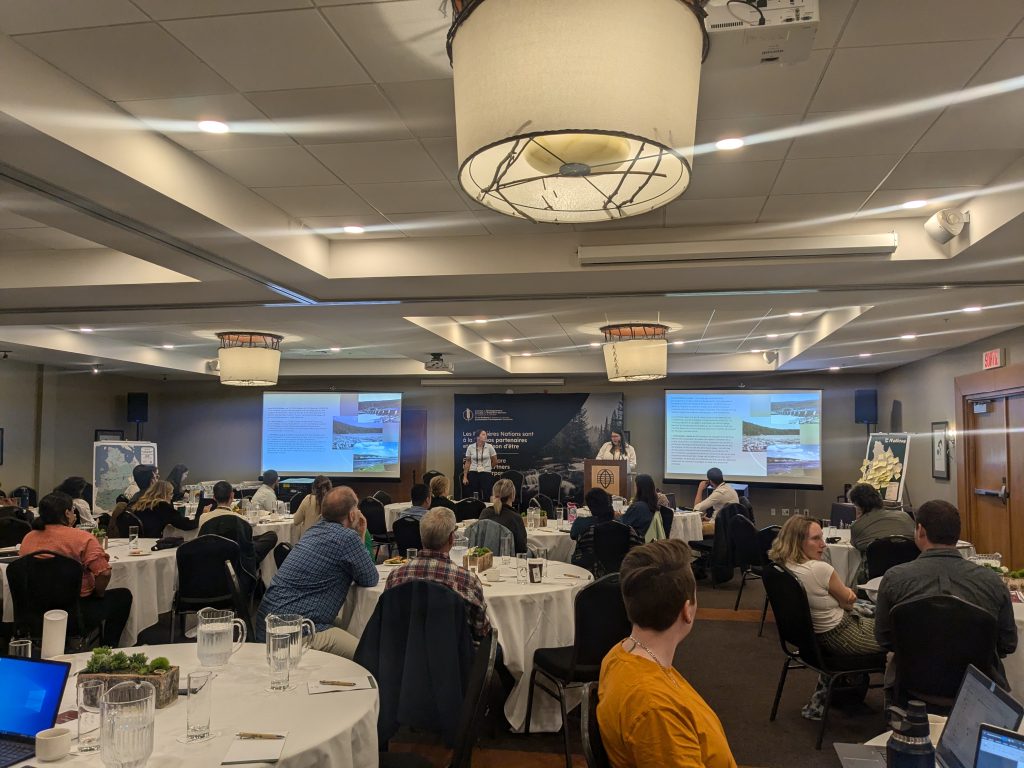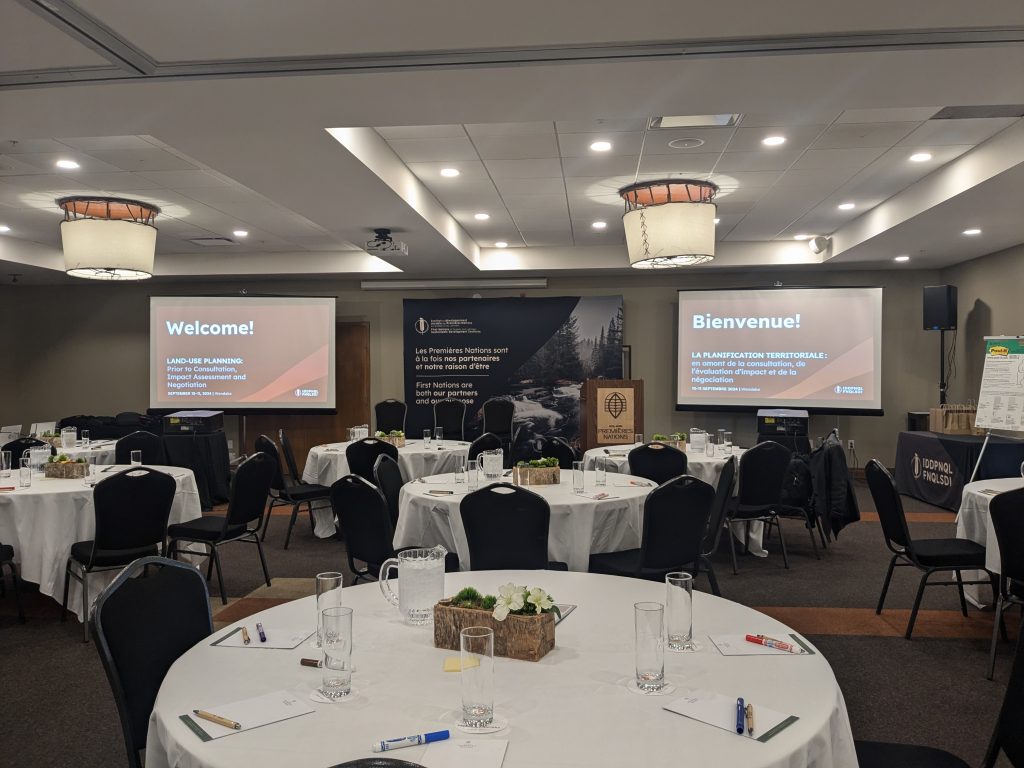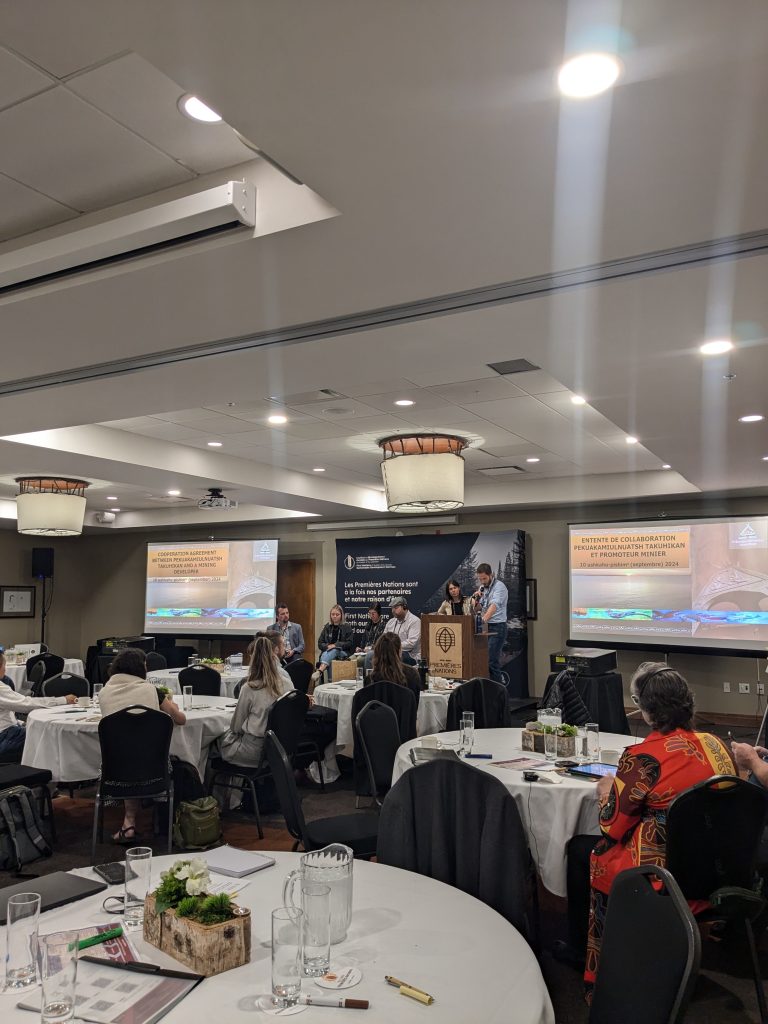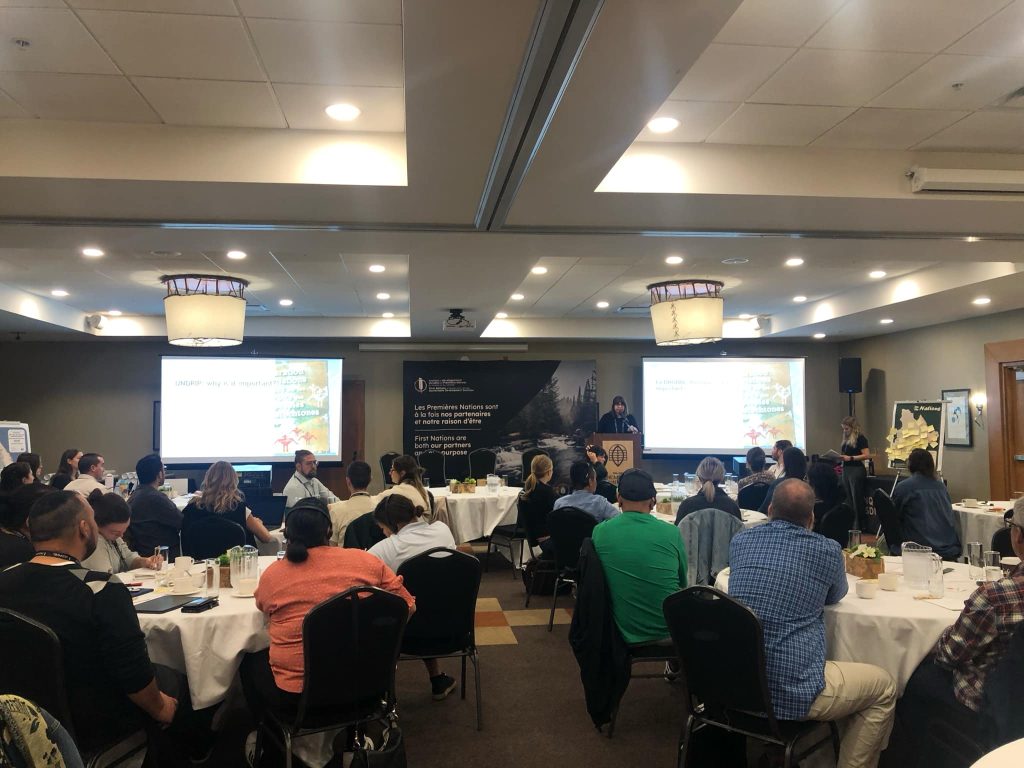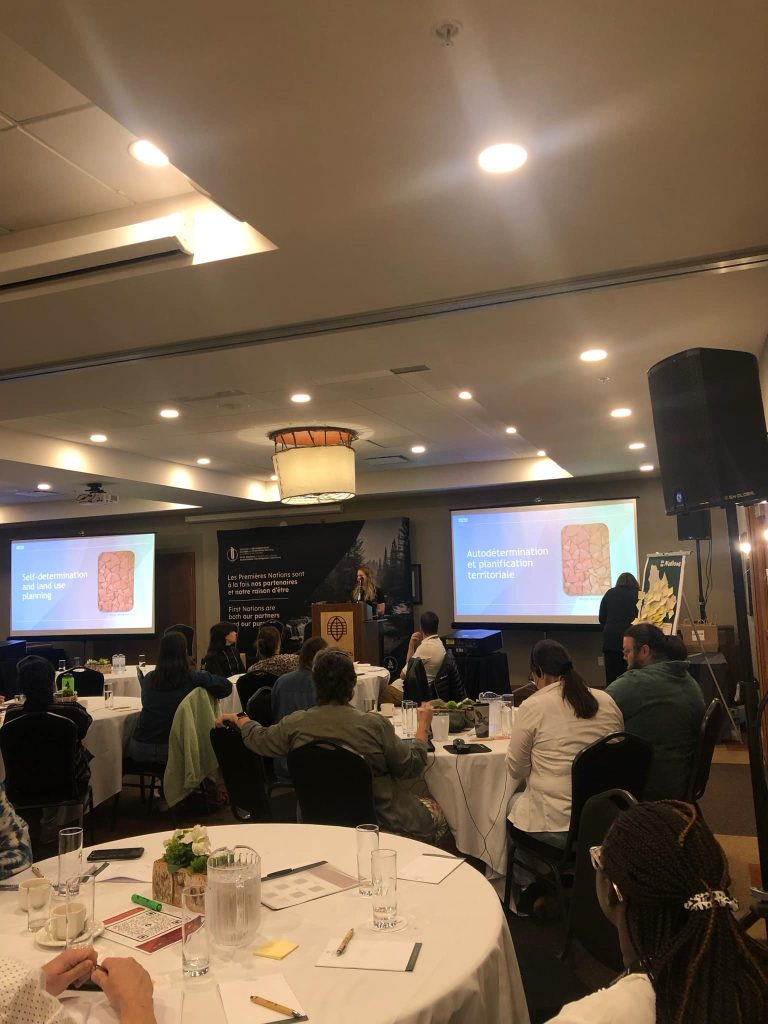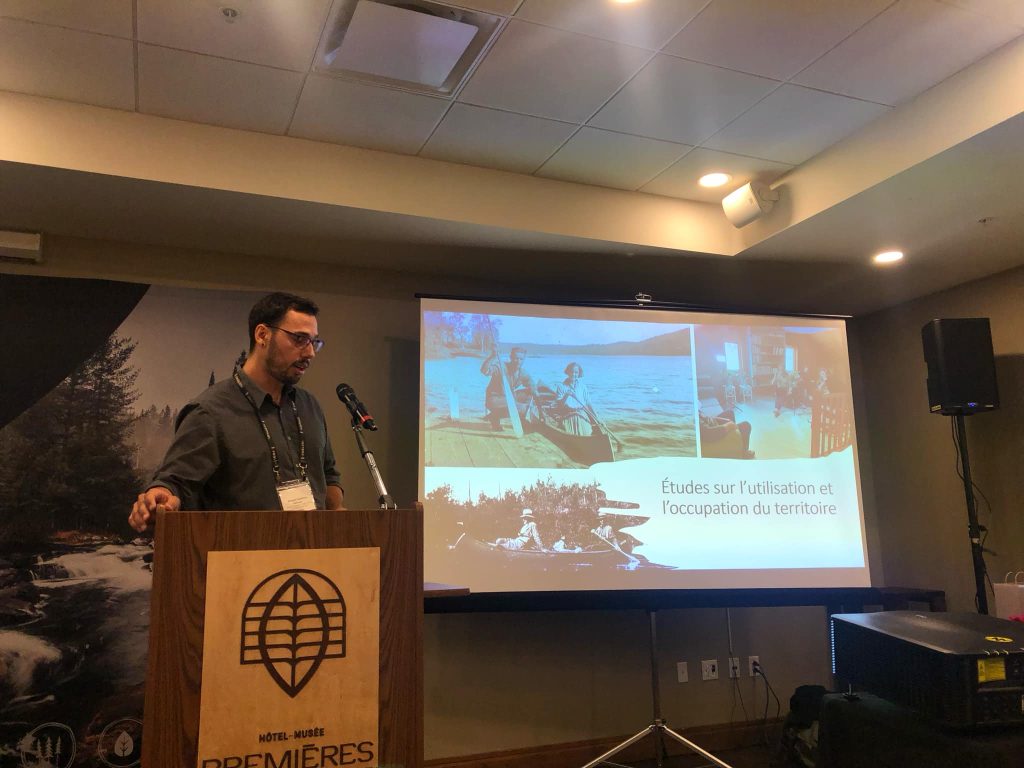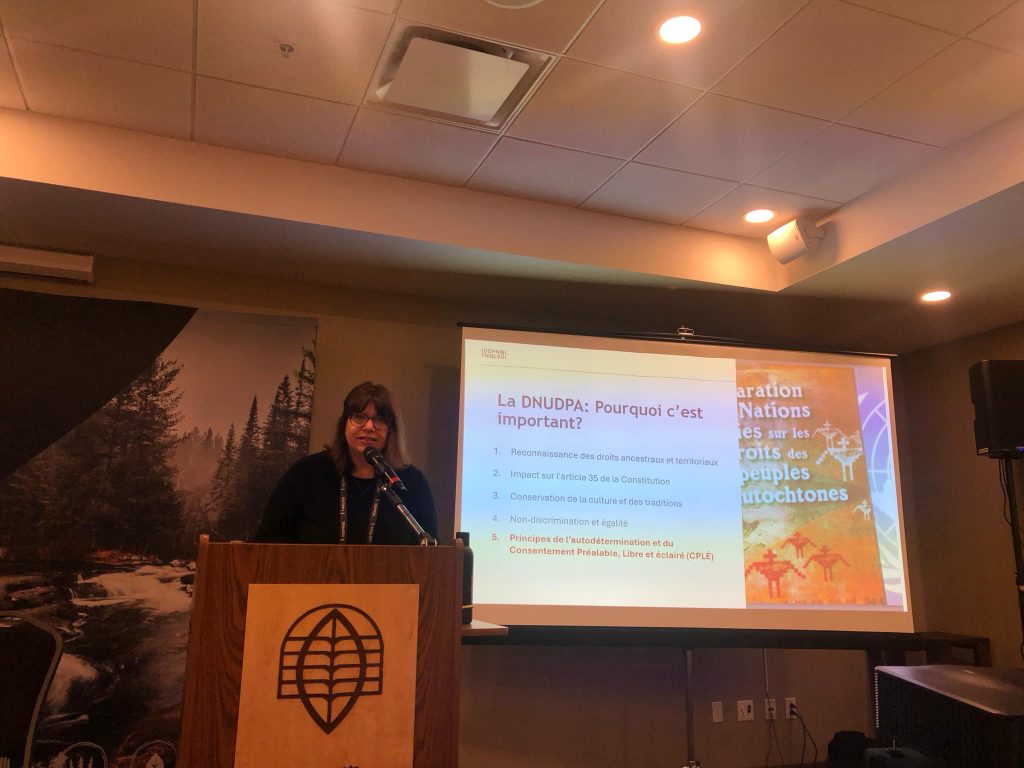First Nations gather for Territorial Planning event
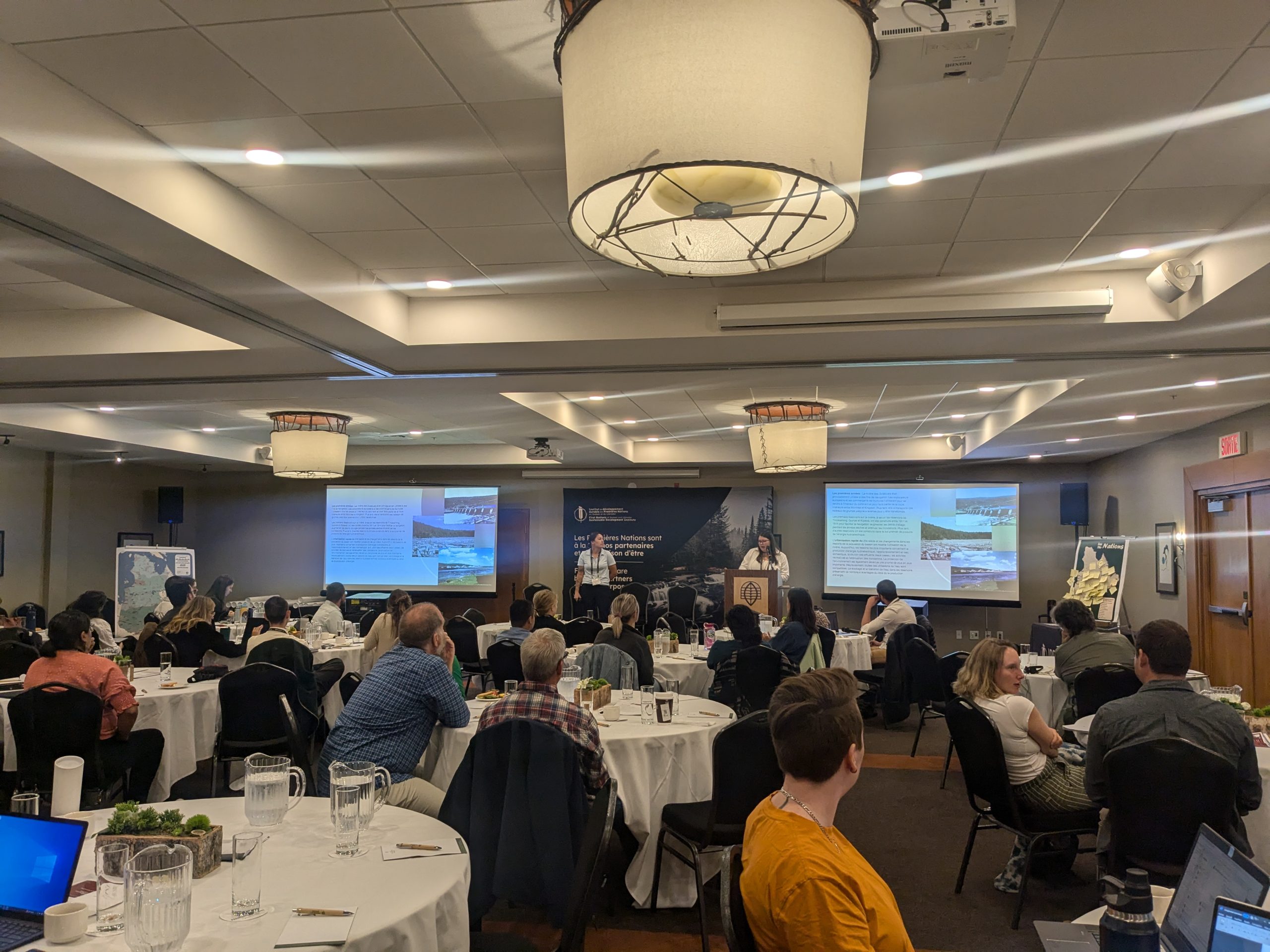
47 representatives of First Nations organizations and key players took part in the event ” Territorial Planning : Prior to Consultation, Impact Assessment and Negociation’’ that we hold on September 10 and 11th 2024.
They were able to reflect on land-use planning as a tool for self-determination and the assertion of rights in the context of consultations, impact assessments and negotiations.
Addressing Growing Challenges
Faced with increasing demands to First Nations in the exploitation of natural resources, current consultation processes are insufficient. This event aimed to explore how land-use planning can become a robust tool for the environmental offices our teams work with. Over the course of two intense days rich in discussions, innovative tools were presented to strengthen the capacity of First Nations in terms of land-use planning . As a bonus, each participant left with a map of the territory prepared by the FNQLSDI, a reminder of the importance of cartography!
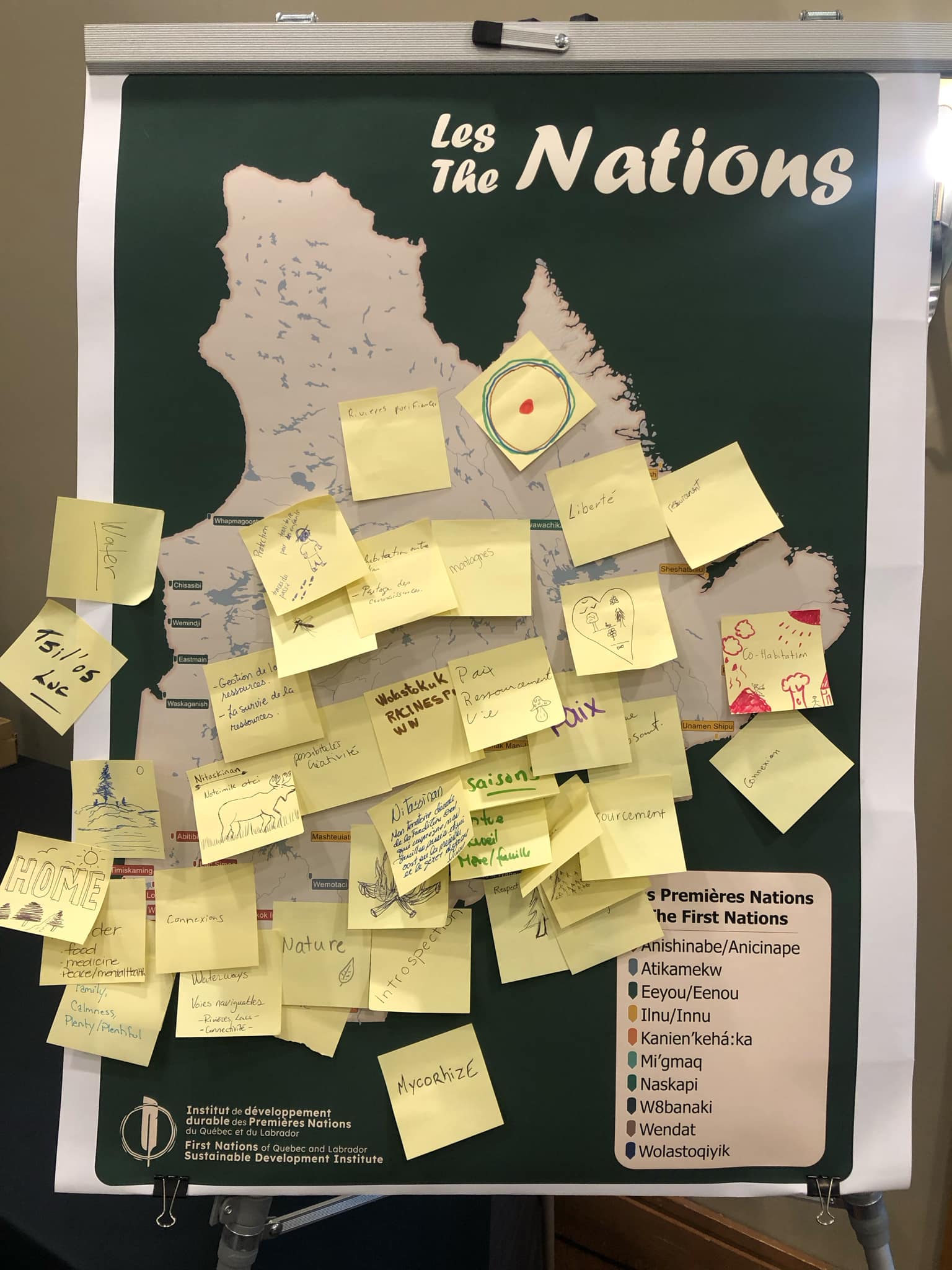
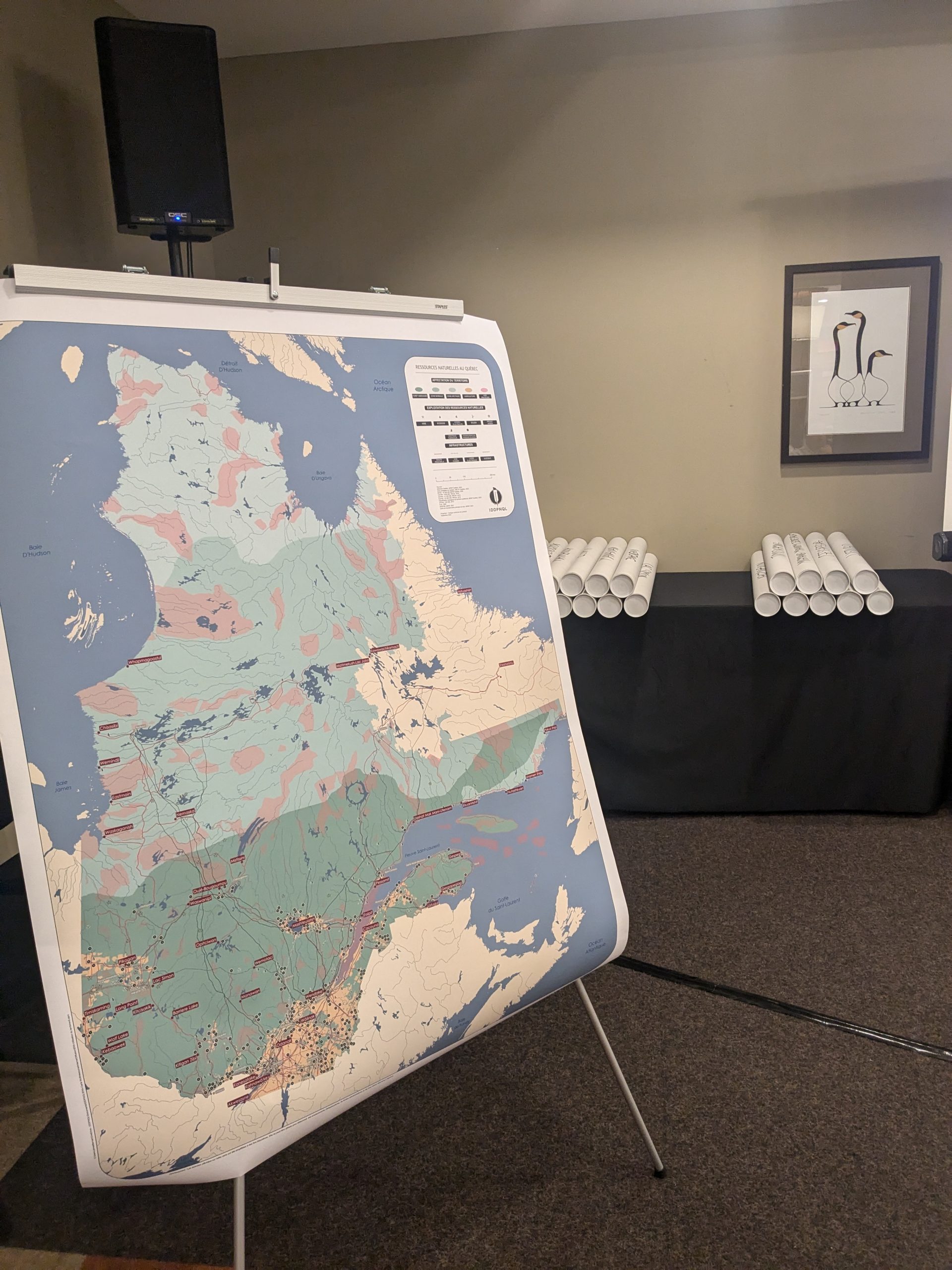
Concrete examples highlighted in our panels
1. How to negotiate with third parties This panel explored different approaches to establishing agreements with developers, First Nations or governments. These agreements may be far from perfect, but they remain essential strategic tools in the land-use planning process. Collaboration with third parties is an unavoidable step for environmental offices.
2. Land-use planning: Lessons from success stories
Concrete projects, often underway for years, were presented to illustrate the importance of data collection and territorial documentation. The speakers emphasized one point: the trust of community members and political relations within Indigenous governing bodies are the cornerstone of any successful planning process.
Case study : Putting yourself in the shoes of a First Nation faced with a mining project
The second day threw participants into a stimulating hands-on workshop: they worked on a fictitious case study, putting themselves in the shoes of a First Nation faced with a consultation request for a mining project. Equipped with maps of the territory created for the exercise, they explored different courses of action, sharing their experiences and strategies. Discussions provided an opportunity to compare approaches and learn from each other’s practices.
Themes and topics covered
The first day began with a background on the issues at stake in consultations, as well as the pressures of climate change and energy development on the territory.
Land-use planning then took center stage, with inspiring examples linking Indigenous culture and history. Geomatic and interactive tools were presented to make land management more transparent and strategic. The final panel focused on the benefits and limitations of collaboration agreements and protocols with third parties.
The second day began with a focus on the United Nations Declaration on the Rights of Indigenous Peoples (UNDRIP) and Free, Prior and Informed Consent (FPIC) as tools for First Nations self-determination. Concrete land-use planning initiatives during the event’s second panel illustrated the importance of data collection and territory documentation. Speakers put emphasis on the fact that the trust of community members and political relationships are the cornerstone of any successful project. Finally, discussions focused on opportunities for Indigenous leadership in impact assessments, with an example of collaboration between 3 First Nations for the Témiscamingue dam-bridge replacement project.
In short, this event provided a valuable forum for exploring new and creative solutions that place First Nations at the heart of the management of their territories.
We would like to thank all those who attended the event. Many thanks also to the presenters and panelists: Caroline Desbiens ( Professor, Department of Geography Faculty of Forestry, Geography and Geomatics, Université Laval), Marie-Laure Lusignant (Bureau de Gestion du Territoire des Atikamekw de Wemotaci), Lori-Jeanne Bolduc (Huron-Wendat Nation Bureau du Nionwentsïo) Jonathan Launière (Pekuakamiulnuatsh Takuhikan), Jordan Hatton (Bingwi Neyaashi Anishinaabek – Sand Point First Nation), Roxane Germain (Conseil de la Première Nation Abitibiwinni), Gloria Vollant (Innu Takuaikan Uashat mak Mani-Utenam), Alexandre Carrier and Mickael Castilloux (Bureau du Ndakina – W8banaki), Andrea Lesperance (Assembly of First Nation), Kacie McLaren (Kebaowek Lands Management and Resources), Lindsay McLaren Polson (Timiskaming First Nation)
We would like to extend our warmest thanks to everyone who contributed to the success of this event, including the Hôtel Musée de Wendake and SM Global.
